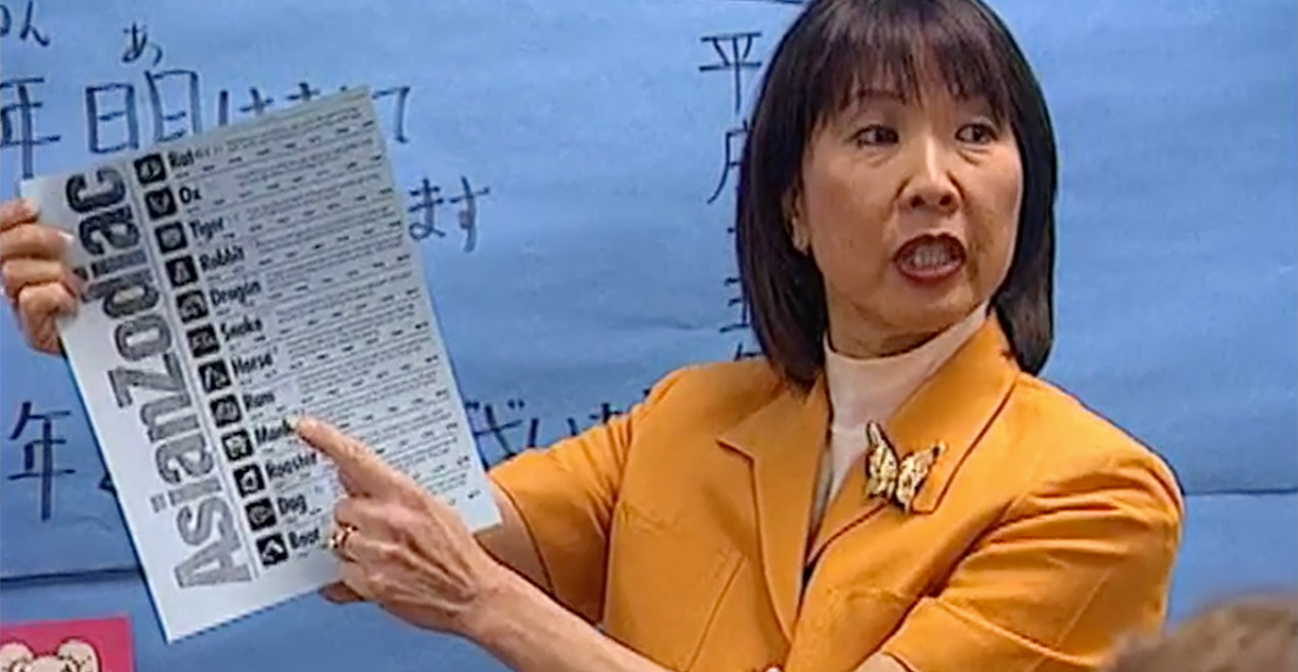Join us for conversations that inspire, recognize, and encourage innovation and best practices in the education profession.
Available on Apple Podcasts, Spotify, Google Podcasts, and more.

CLASSROOM AT A GLANCE
Teacher
Leslie Birkland
Language
Japanese II
Grades
9-11
School
Lake Washington High School, Kirkland, Washington
Lesson Date
January 10
Class Size
32
Schedule
55 minutes daily
In this lesson, students learn about the products and practices of the Japanese New Year’s celebration. First, half of the class participates in authentic Japanese New Year’s games and activities. The other half of the class breaks into four groups to discuss cultural aspects of the New Year’s celebration, then jigsaws into four new groups to share their knowledge with each other. Then the two halves of the class switch, so that all students have an opportunity to participate in each activity and discussion. The lesson concludes with a discussion in English in which students compare the customs of their own cultural backgrounds with Japanese New Year’s customs.
Standards Addressed
Communication: Interpersonal, Interpretive, Presentational
Cultures: Practices, Products
Comparisons: Cultural
heritage speaker
A heritage speaker is a student who is exposed to a language other than English at home. Heritage speakers can be categorized based on the prominence and development of the heritage language in the student’s daily life. Some students have full oral fluency and literacy in the home language; others may have full oral fluency but their written literacy was not developed because they were schooled in English. Another group of students — typically third- or fourth-generation — can speak to a limited degree but cannot express themselves on a wide range of topics. Students from any of these categories may also have gaps in knowledge about their cultural heritage. Teachers who have heritage speakers of the target language in their class should assess which proficiencies need to be maintained and which need to be developed further. See also native speaker.
kanji
Used in one of the three Japanese writing systems, kanji are the characters drawn from the Chinese writing system. Approximately 2,000 kanji, many with multiple meanings, are needed to read materials written for adults in Japanese.
negotiation of meaning
In this process, teachers and students try to convey information to one another and reach mutual comprehension through restating, clarifying, and confirming information. The teacher may help students get started or work through a stumbling block using linguistic and other approaches.
Reflect on Your Practice
As you reflect on these questions, write down your responses or discuss them as a group.
Watch Other Videos
Watch other videos in the Teaching Foreign Languages K-12 library for more examples of teaching methodologies like those you’ve just seen. Note: All videos in this series are subtitled in English.
Politics of Art (Spanish) features students debating political and cultural issues in multiple group arrangements, and Holidays and Seasons (German) illustrates students making cultural comparisons at the elementary level.
Put It Into Practice
Try these ideas in your classroom. Where it’s not already evident, reflect on how to adapt an idea that targets one performance range for application to other performance ranges.

World-Readiness Standards for Learning Languages
The World-Readiness Standards for Learning Languages create a roadmap to guide learners to develop competence to communicate effectively and interact with cultural understanding. This lesson correlates to the following Standards:
Interpersonal Communication
Interpretive Communication
Presentational Communication
Relating Cultural Practices to Perspectives
Relating Cultural Products to Perspectives
Cultural Comparisons
Lesson Materials
Jigsaw Readings (PDF, 23 K)
Worksheets that students used to learn about Japanese New Year’s food and cards for the jigsaw activity (Includes English translation)
Photo panel images used in the class are part of the Minna no Kyozai Web site maintained by The Japan Foundation.
Photo Panel Bank Series
Series IV, No. 002 (© by the Japan Foundation)
Series IV, No. 004 (© by the Japan Foundation)
Series IV, No. 005 (© by the Japan Foundation)
Series IV, No. 006 (© by the Japan Foundation)
Series IV, No. 100 (© by the Japan Foundation)
Curriculum References
Web Resources:
The Japan Forum
Promotes language education and intercultural understanding among elementary and secondary school students. Note: Ms. Birkland uses the Deai resource, which shows the lives of seven Japanese high school students.
The Japan Foundation
An organization for international cultural exchange in Japan, including information on Japanese studies and Japanese language education (available in English and Japanese). Note: Ms. Birkland acquired the large photographs (Shashin Paneru Banku) for this lesson from this source.
Print Resources:
Japanese Writing Practice Through Pictures and Topics. Nihongo Kyoiku Kyozai Kenkyukai (Japanese Educational Materials Research). Compiled by Sumiko Tomioka and Saku Takaoka. Tokyo, Japan: Senmon Kyoiku Shuppan, 1992.
Shitsu, Sanno Tanki Daigaku Nihongo Kyoiku. Enjoyable Task Reading in Japanese: Intermediate. Tokyo, Japan: Bonjin-sha, 1992.
Super Kit 2 — Volume 2: A New Selection of Materials — Teaching Aids for Japanese Language Learning. Tokyo, Japan: ALC Press, Inc., 2000. www.alc.co.jp